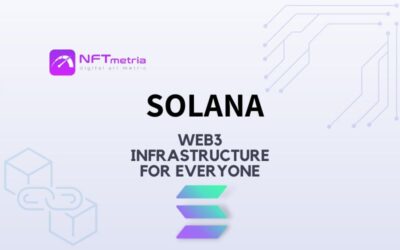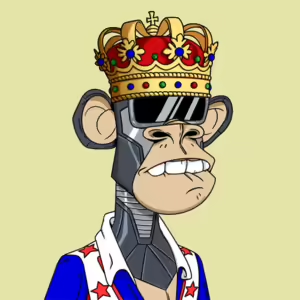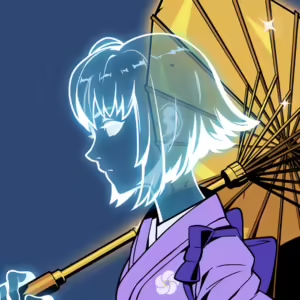WAX is a first-level blockchain that is designed to speed up and simplify the operations carried out on it for both users and developers. At the same time, Delegated Proof of Stake (DPoS) is used as a consensus mechanism, and the blockchain architecture allows information processing in just 500 milliseconds. WAX is also a blockchain focused on gaming and the NFT industry. The lack of gas and popularity among game developers make WAX one of the most popular blockchains for NFTs.
What is WAX Blockchain?
The WAX (Worldwide Asset eXchange) blockchain is the creation of William E. Quigley and Jonathan Yantis, which they developed in 2017. Their goal was to offer a blockchain where any user can create, buy, sell and exchange virtual digital items.
By 2020, WAX has established itself as the blockchain for NFTs and games. The lion’s share of transactions falls on NFTs. The fact is that the blockchain offers free transactions, which are possible thanks to the resource mechanism. The resource mechanism, in turn, works thanks to the third-generation consensus mechanism – Delegated Proof of Stake.
In addition, the blockchain boasts that it produces a block every half a second and can process 3,000 transactions per second. A guild authorized by WAX to produce a block can process transactions stored in the network’s memory pool. The speed and bandwidth of WAX make it one of the fastest and most efficient blockchains on the market. In comparison, the transaction speed is almost double the average number of transactions processed by Visa.
Native token of WAX blockchain
The native blockchain token is WAXP, a native network version, and there is also a version of a token specifically designed for Ethereum, WAXE.
For the period of 2023, WAXP is in the top 200 cryptocurrencies with a capitalization of over $191,000. The current WAXP rate is currently just over 5 cents.
How does the WAX blockchain work?
The WAX blockchain works thanks to guilds:
- There are 21 guilds in total that are rewarded for producing blocks. These rewards are given out based on the number of blocks each guild can generate.
- Reserve guilds also receive a portion of these rewards for being able to act as reserve operators. They demonstrate their capabilities by processing a block on a random request. In doing so, they help maintain the network and ensure its smooth operation.
- Guilds are the backbone of the WAX blockchain. They are responsible for producing blocks and maintaining the integrity of the network.
- Guilds operate on a consensus mechanism that ensures transactions are validated and processed without errors.
- Reserve guilds act as a support system and provide an additional layer of network security. Their participation in the reward system also encourages them to improve their skills and capabilities.
WAX uses the DPoS decentralized consensus algorithm to optimize the performance of blockchain applications and ensure network reliability. The algorithm also incentivizes guilds to maintain their integrity by keeping the blockchain ecosystem secure. Through a rolling voting system, token holders can choose which guilds should produce blocks. Token holders can convince others to vote for them to become block producers.
Transactions on the WAX blockchain
Transactions on the WAX Blockchain are free. However, there are problems with spam on the blockchain with free transactions. To prevent spam, transaction senders should use system resources for staking:
- NET,
- CPU,
- RAM.
Users may require a certain amount of RAM depending on the transaction, but they can purchase more through the WAX Blockchain trading platform. Using the Bancor algorithm, the platform exchanges $WAXP for RAM.
So, free transactions and blockchain guilds are two related arguments. Over time, the resources of the account (wallet) dry up when used and are restored in 24 hours. To purchase additional resources, the user must stake a certain amount of $WAXP. At the same time, CPU and NET resources are charged for staking, but the RAM resource must be bought for $WAXP. Thus, active users provide guilds with the $WAXP token to generate new blocks.
NFT smart contract standards for the WAX blockchain
There are several NFT smart contract standards for WAX:
- Atomic Asset Standard is a standardized smart contract template that allows creators to mint, transfer and list NFTs on the blockchain.
- Simple Assets (SIMPLE) Standard is another NFT smart contract standard that allows creators to create swappable and non-swapable tokens on the blockchain.
- Simple NFT (SNFT) Standard – This smart contract standard is designed specifically for short-lived tokens and offers more flexibility, security and efficiency than other NFT standards.
These smart contract standards ensure the interoperability, security, and transparency of NFTs on the WAX blockchain. They also simplify the process of creating and managing NFTs.
What consensus mechanism does the WAX blockchain use?
The WAX blockchain uses a delegated proof of stake (DPoS) consensus mechanism. DPoS is a fast and energy efficient way to achieve consensus on a decentralized network. In the DPoS system, a group of 21 block producers (guilds) are elected by the community to confirm transactions and create new blocks. These block producers are incentivized to act honestly and efficiently as they are rewarded for their work.
What are the main applications of the WAX blockchain?
Blockchain application areas are as follows:
- Games;
- DeFi;
- Collectibles;
- NFTs;
- Web 3.0.
The list doesn’t end there. Above are the most popular applications for WAX.
The ecosystem of WAX blockchain
The blockchain ecosystem consists of more than 230 dApps of different categories:
- Games,
- DeFi,
- Marketplaces and others.
Popular dApps on the WAX blockchain
The most popular dApps on WAX are:
- Alcor.exchange,
- AtomicHub,
- Alien Worlds,
- Taco,
- Atomic Assets.
What is WAX NFTs?
WAX NFTs are NFTs created on the WAX blockchain, which is most commonly used for Gaming NFTs, Virtual Worlds, and Collectibles NFTs due to the flexibility of the blockchain infrastructure and free transactions.
Top WAX NFT Collections
The most popular collections on the WAX blockchain are:
- Farmers World,
- Alien Worlds,
- Farming Tales.
Farmers World
Farmers World is the first blockchain game with arcade farming elements in Play-to-Earn format.
- Was launched in July 2021.
- More than 100k followers on Twitter @FarmersWorldNFT.
- Secondary market volume exceeds 443,966,000 $WAXP (approximately $26 million).
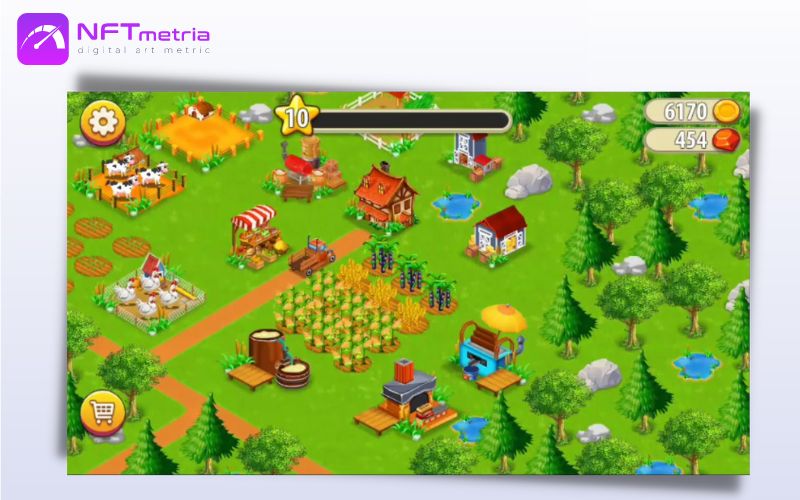
Alien Worlds
Alien Worlds is a space-themed metaverse launched in summer 2020. Several planets are available in the game, on which there are from several hundred lands for the extraction of in-game currency. The NFT collection of this game itself is represented by many attributes – from currency mining tools to planets. Trading volume on the secondary markets exceeds 220,325,000 $WAXP (about $13 million).
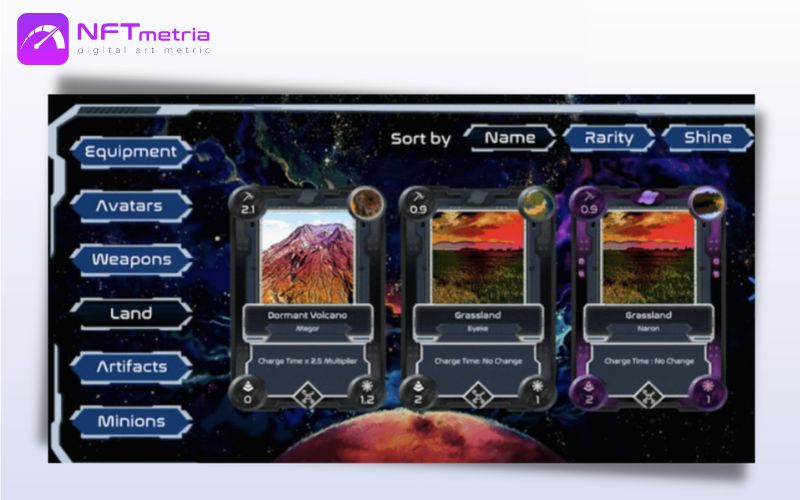
Farming Tales
Farming Tales is an arcade farming game with many features. There are also closed boxes in the game, from which valuable NFTs can drop – from tools to lands, which are the most expensive in the game. The game launched in 2021. The trading volume on the secondary markets exceeds 107,341,000 $WAXP (about $6.3 million).
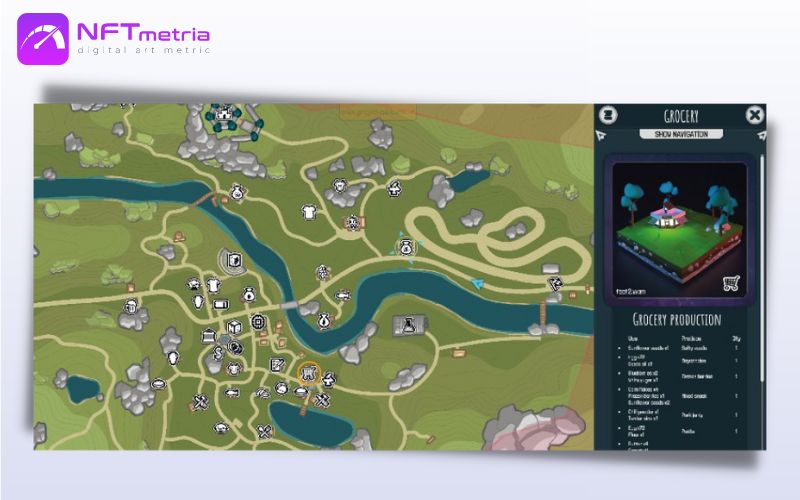
Which wallets are suitable for holding WAX NFTs?
Wombat, Wax Cloud Wallet crypto wallets are suitable for storing WAX NFTs. These wallets are also the most popular. Many multi-currency wallets have not yet implemented support for the WAX blockchain due to wallet resource requirements such as RAM, CPU, and NET.
How to buy WAX NFTs?
- Remember that initially you need to connect your crypto wallet with self-storage to the marketplace of your choice.
- Next, find the official collection using the search bar on the marketplace.
- Analyze and choose the NFT you want to buy; click on it and then on the “Buy” button.
- When buying, consider the cost of transaction fees.
Where to buy WAX NFTs?
You can buy WAX NFTs on marketplaces.
Here are the most popular among them:
- HunnyPlay,
- AtomicHub,
- NeftyBlocks,
- NFTHive.




